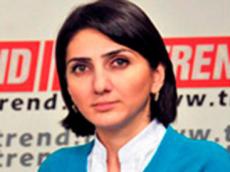Today.Az » Business » Iran's debts and empty funds
15 March 2012 [13:01] - Today.Az
 The interest in Iran's foreign debt increases in proportion to the discussions on a military strike against this country. As it is known, political instability creates uncertainty, which seriously undermines consumers' and investors' confidence in the future.
The interest in Iran's foreign debt increases in proportion to the discussions on a military strike against this country. As it is known, political instability creates uncertainty, which seriously undermines consumers' and investors' confidence in the future.
One immediately recalls Iraq's debt plot, which culminated after almost unrestricted seizure of Iraq's capital by coalition forces. The U.S. proposal for the unconditional cancellation of Iraq's debt was not immediately supported by its main creditors. There were some reasons. The amount of Iraq's external debt was $200 billion.
At present, Iran's amount of external debt is almost 10 times less than the above-mentioned amount. On the one hand, it is a great advantage of economy of this country. According to the Iranian Central Bank, Iran's external debt in the fourth quarter of 1389 (2010/2011 is $22 billion 814 million. This makes 6.5 percent of GDP.
This index of Iran's external debt is considered to be acceptable, because, first, it is in the range meeting international standards and, second, equals to only 20.8 percent of exports. We know that the country's economy is considered to be stable if the external debt is less than 100 percent of exports. Iran's exports in the fourth quarter of the year is $109 billion 312 million.
Moreover, Iran's foreign exchange reserves ($120 billion) are 5.2 times more than the country's external debt. This testifies to the lack of problems with solvency now.
On the other hand, Iran's the relatively low external debt, stipulates a lack of inflow of foreign investments into the country to maintain the required dynamics of industrial development. Iran, being a country with attractive sectors for foreign investors, has difficulty in sequential increase in investments in key industries - gas, oil, petrochemical, metallurgy and construction.
According to the Iranian organization of investments and economic and technical assistance, Iran has managed to attract $2.7 billion of foreign investment for ten months (from March to December 2010), whereas according to Iran's 20-year development plan, the Islamic Republic must ensure receipt of $ 500 billion investments, that is, $25 billion a year to achieve eight-percent economic growth.
Iranian experts consider the sanctions of the U.S. and Western countries as a major obstacle to the inflow of foreign capital into the country, especially unilateral restrictive measures of the EU and Japan. Previously, they were among the main investors to Iran. Foreign investors, for example Japan, which recalls the loss of $4 billion in Iraq's economy, will not be interested in investing in Iran's economy because of a number of tense moments in international relations.
Besides the oil embargo, according to the sanctions imposed by the EU, U.S. and UN against Iran, the accounts of Iranian banks and financial organizations in these countries, must be frozen. The same applies to financial institutions (not necessarily Iranian), which cooperate with the Iranian Central Bank. Though official Tehran thinks that the introduction of new sanctions by the U.S. administration against Iranian Central Bank will not produce effect, the country is currently experiencing national currency devaluation due to difficulties with obtaining money for oil supply at the Iranian banks' accounts.
This is a serious problem in the long term prospect. It leads to the impoverishment of the country's foreign exchange reserves and the threat of servicing though small, but existing external debt.
Ellada Khankishiyeva /Trend/
|
|